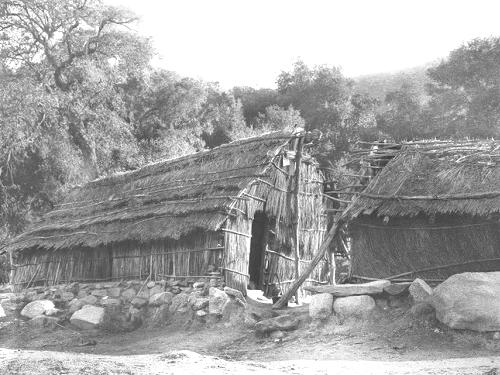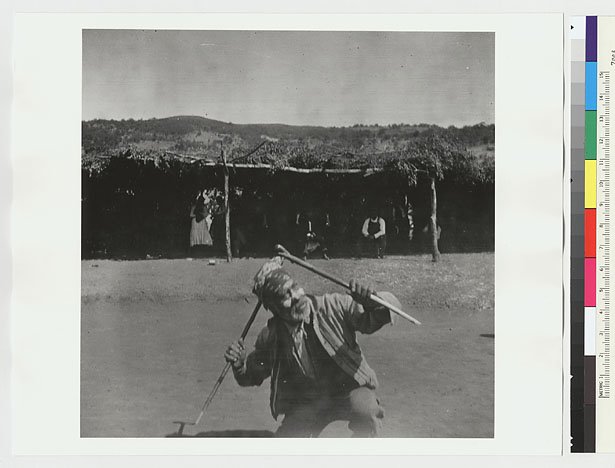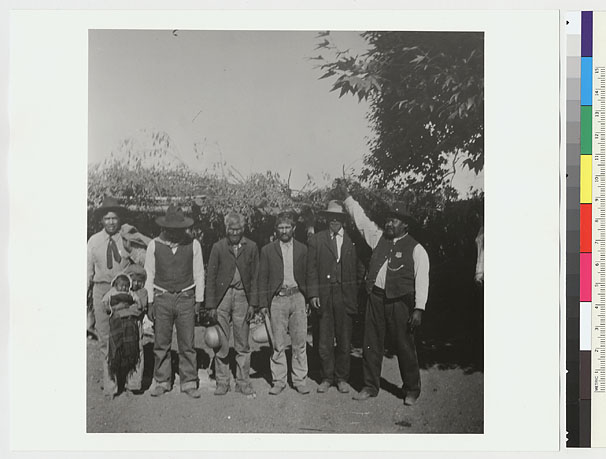With the olympics going on , not much is being said about our people despite our participation. there is a great website put out by the national museum of the American Indian .. check out the video on the link..
http://nmai.si.edu/olympics/
Best in the World: Native Athletes in the Olympics
May 25, 2012–September 03, 2012
Washington, DC
Press Release
Related Public Programs
This exhibition features Native athletes who have provided some of the most dramatic moments in Olympic history. Special attention is given to the 1912 Games in Stockholm, whose centenary we celebrate in 2012, and in which Jim Thorpe (Sac and Fox ) won both the Pentathlon and the Decathlon (a feat not since accomplished); Duke Kahanamoku (Native Hawaiian) won the 100 Meter Freestyle; Andrew Sockalexis (Penobscot) placed fourth in the Marathon; and Lewis Tewanima (Hopi) won the Silver medal and set an American record for the 10,000 Meters, which stood for more than 50 years until another American Indian, Billy Mills (Oglala Lakota), won Gold in Tokyo in 1964.
Tuesday, August 7, 2012
Posted by
Karen Vigneault Librarian
at
8:50 AM
0
comments
![]()
Monday, June 18, 2012
CONDOLENCES TO THE PAIPA FAMILY
Howka tribal members, as many of you the Paipa family suffered a loss in their family.. If anyone would like to post a condolence please go to the link below.. My prayers are with the family..
Posted by
Karen Vigneault Librarian
at
12:46 PM
1 comments
![]()
Thursday, June 14, 2012
CALL FOR ARTISTS-aged 16-25
The Marin Museum of the American Indian seeks work by Native American Artists, aged 16-25, to showcase on a rotating basis.
There are no deadlines.
Work does not have to be strictly Native in content but must be of high quality.
Arrangements can be made with the Museum for sales.
Great resume opportunity for students applying to art schools, colleges, and universities.
Museum of the American Indian
Miwok Park, 2200 Novato Blvd.
Novato, Calif. 94947.
Contact: Colleen, 1(415) 897-4064
office @ marinindian.com (take out spaces),
online: <http://museumoftheamericanindian.org/>
Posted by
Karen Vigneault Librarian
at
8:01 AM
1 comments
![]()
Wednesday, June 13, 2012
ESSAY CONTEST
Howka tribal memebrs, there is a new essay contest that our tribal youth can enter.. here is the info (below) if any tribal member wins.. please let me know..
~ Essay Contest ~ Guidelines Who Can Participate: Native American students enrolled in grades 5th - 12th. Length and Language: 1200 - 2500 words. Essays must be a minimum of 1200 words but not exceed 2500 words. For Winning Authors: First place receives $300, second place receives $150, and third place receives $75. Deadline: June 30, 2012 Theme: Living Proof Native nations continue to make great strides in governance, economy, education and social welfare. We work daily to triumph over generations of destructive federal and state policies that sought to end our political, cultural and social existence. We are the living proof that our people did not just "survive," we continue to "thrive." The theme of this year's For All My Relations Conference is "Living Proof". We can all look to historical examples, heroic figures and personal anecdotes that speak to our resiliency and determination. Each one of us is "living proof" that the strength, pride, courage and cultural values of our communities continue to thrive. Write an essay illustrating how you or a member of your family or community demonstrates the "Living Proof" theme in overcoming historic or contemporary challenges. Rules: Entries will be judged anonymously. Each essay must be original work of the contestant. All essays may be published in whole or part by NIJC. Winning essays will be published. Submission: Essays must be submitted to NIJC by June 30, 2012. Essays may be emailed to nijc@aol.com or faxed to 707-579-9019 or mailed to 5250 Aero Drive, Santa Rosa, CA 95403. Each essay must be submitted with a page that includes the applicants name, age, grade, tribal affiliation, address, phone number, and email. ________________________________
Posted by
Karen Vigneault Librarian
at
10:34 AM
1 comments
![]()
Thursday, May 3, 2012
Oral History Leads to Piece of Missing Mission Bell
Howka tribal members, As many of you know over the century there has been numerous stories about the SY Mission and the elusive mission bells.. Many stories have swirled around about who took them and or where they went.. This is a recent story..
Solving an 86-Year Mystery
Oral History Leads to Piece of Missing Mission Bell
By Mimi Ko Cruz
April 27, 2012
A piece of a missing mission bell more than two centuries old soon will be back where it belongs, thanks to history sleuth Kathleen R. Frazee.
Caption:
COPH now is temporarily housing this historic bell piece. Photo: Karen Tapia Download Photo
Fascinated by the mystery of the missing bells of Santa Ysabel, an asistencia (or sub-mission) of Mission San Diego de Alcalá, Frazee, a staff member in the Center for Oral and Public History, did some research.
In 1926, the mission’s two original bells, which date back to 1723 and 1767, from Santa Ysabel’s chapel disappeared. While the clappers were found the next day and returned in 1959, the whereabouts of the bell shells remained a puzzle — until last year, that is, when Frazee read an old oral history by the late historian Helen Smith.
Among the collection of Smith’s oral histories, which were donated to the center by her daughter, was an interview with an individual identified only as Anonymous.
The now-deceased unknown narrator, who Frazee learned was born the year the bells disappeared, told Smith the story he had heard from his father, an auto shop owner in Redlands who heard it from his friend, Fig Tree John.
The oral history most likely was recorded around 1975, Frazee said. In it, the narrator said that Fig Tree John approached his father saying three young friends had some metal that they wanted to have assayed.
“My dad said, ‘sure, bring a chunk of it in, whatever it is, and I’ll be happy to send it off to L.A. and have it assayed for you.’ So, Fig Tree said, ‘Fine, I’ll send them in and tell them where to find you.’ ” the narrator said. “I think this probably happened within a few months after the bells disappeared.”
The three friends brought in the brassy-colored chunks of metal that they had hoped were gold, according to the oral history, which indicates that the narrator’s father sawed off a small sample and sent it off for authentication, only to learn it contained “40 different metals, a wild combination of stuff. It was not just copper and zinc, it had multiple things in it.”
So, the narrator’s father tells Fig Tree John, who reports back to his friends, and they never returned to collect the pieces.
Curious, the narrator asks Fig Tree John where the metal chunks came from and hears this story: “It was a very rainy, stormy night. ... There were three or four of them. They had one or two acetylene torches. Literally, in the dead of night, they cut the bells into pieces that could be moved, and they stashed the things into gunnysacks — an eeny-meeny-miny-mo-kind of thing, approximating the amount of weight so that each of them had their fair share of these chunks and went off with them. And that was it.”
Upon hearing that account, the narrator recalled, “My dad said, ‘oh, for God’s sake, tell them to come and get them. I don't want them in my garage.’ Fig Tree John said, ‘Well, I’ll tell them, but ... if they don’t have any gold in them, they don’t have any more interest in them. They don’t want to be caught with the things.’ And, my dad said, ‘well, I don’t really want to have them either.’ And, so, Fig Tree John said, ‘dump them. That’s okay. Take them out to the city dump and get rid of them.’ ”
But, “my dad didn’t really want to do that. It ran against the grain,” the narrator continued. “So, he kept the idiot things and kept them clear up until he retired in the mid-’40s. The war was well on its way. He retired, sold the garage, and here is this old gunnysack full of chunks of bells. So, at this point, he took them home, and they were in his garage at home for a long time.”
Later, the narrator, who had been using the top of one bell as decoration in his Lafayette home, said he read about the missing bells in a 1965 issue of Sunset magazine. Immediately, he recognized the top of the bell in the photo as a match for the one he had on display at his home and felt a need to write to Santa Ysabel, telling his father’s story.
He said his father had felt “a great deal of guilt” about how he ended up with the bell pieces, but was afraid to turn them over to authorities for fear of being accused of stealing the bells in the first place.
A Catholic priest, Father Nardi, paid the narrator a visit some weeks after receiving the letter and took the bell top back to the mission, promising not to divulge the name of the source. Today it sits in a museum at the asistencia.
Enough names and locations were mentioned in the oral history that Frazee followed the clues, made some calls and tracked down the narrator’s wife, who told Frazee she had a piece of one of the bells and would gladly hand it over to the center. The wife asked to remain anonymous, Frazee said, and it is unknown what happened to the rest of the missing bell pieces.
Last week, a center volunteer picked up the wife’s bell piece and delivered it to Frazee, who proudly clutched the 6.5-pound slab of metal to her chest, smiling wide with excitement.
“This is part of one of the oldest bells in California, maybe the oldest,” she said. “Isn’t it amazing?”
The center now is arranging a date to deliver the bell piece to Santa Ysabel, Frazee said.
Natalie M. Fousekis, COPH director, praised Frazee’s detective work, calling it a “great public service.”
“As historians, we record individual stories and memories,” Fousekis said. “When scholars and the public use one of these interviews, we expect them to do additional research to verify the historical facts and stories in them. In this case, Helen Smith's oral history helps solve the decades-old mystery of the missing mission bells. What a wonderful, surprising discovery! And, we have thousands of fascinating oral histories in our collections that reveal all kinds of untold and unknown stories like this about Southern California.”
Posted by
Karen Vigneault Librarian
at
12:12 PM
0
comments
![]()
Wednesday, May 2, 2012
May 1, 2012, 6:00 a.m. EDT
Fan Palm Research Project Launches New Book on Trailblazing Native American Woman Leader
SANTA BARBARA, Calif., May 01, 2012 (BUSINESS WIRE) -- "We are just dirt rich," admitted Vyola Olinger (later Ortner) in the summer of 1958, when, as chairman of the first all-women tribal council in the United States, she presided over "one of the biggest real estate deals . . . in the country" and the most consequential ever on Indian land. Released by the Fan Palm Research Project, You Can't Eat Dirt: Leading the First All-Women Tribal Council and How We Changed Palm Springs chronicles Olinger's trailblazing political career.
Part autobiography, part biography, this beautifully designed and thoroughly researched publication--filled with rare historical documents and archival photographs--tells the remarkable story of Olinger's rapid ascent in 1954 to the chairmanship of the Tribal Council for the Agua Caliente Band of Cahuilla Indians in Palm Springs, California. It explains how--against all odds--she and her fellow female tribal leaders came together during the 1950s to forever alter the destinies and fortunes of the Agua Caliente Cahuilla and, ultimately, of other tribes across this nation.
At the heart of this amazing success story is Olinger's campaign to maximize the potential of her tribe's primary economic asset--land. Olinger wisely understood that this profoundly underutilized resource could transform her people. Consequently, in a sequence of many "firsts" for the tribe, she pioneered innovative models of business development and progressive governance. At the same time, she built new and enduring relationships between the Agua Caliente Cahuilla and the city of Palm Springs, motivated to protect and enhance some 7,000 acres that the tribe owned within the city limits. She went on to fight for her people in the halls of congress, both in Sacramento and Washington, D.C., amending and creating historic legislation.
Among Olinger's most noteworthy accomplishments was the establishment of the right of tribal members to enter into long-term leases of reservation land--a radical departure from years-old restrictive Indian law and public policy. Signed by President Dwight Eisenhower in October 1959, this momentous legislation opened up entirely new business opportunities for the Agua Caliente Cahuilla as well as for other tribes throughout the United States.
At once an engaging personal testimony and an absorbing profile of an extraordinary political and business leader, this book is an essential addition to women's studies, Native American studies, US-Indian relations, tribal law, women business leaders, the history of modern Palm Springs, and the Agua Caliente Cahuilla.
You Can't Eat Dirt, by Vyola J. Ortner and Diana C. du Pont, is available through www.youcanteatdirt.com , amazon.com, and selected venues.
For further information, including the full text of the press release for the book launch and author biographies, please visit www.youcanteatdirt.com .
To request a review copy, please contact d.dupont@fanpalmresearchproject.com.
Photos/Multimedia Gallery Available: http://www.businesswire.com/cgi-bin/mmg.cgi?eid=50259458&lang=en
SOURCE: Fan Palm Research Project
Fan Palm Research Project
Diana du Pont
d.dupont@fanpalmresearchproject.com
Tel. 805-453-9333
Posted by
Karen Vigneault Librarian
at
10:13 AM
0
comments
![]()
Thursday, April 26, 2012
WHEN CAN OUR PEOPLE GET RESPECT
WHY MUST THEY CONTINUE TO DISRESPECT THE ANCIENT ONES.. IT SEEMS THAT SOME PROFESSORS ARE TELLING US WHO AND WHO ISN'T OUR PEOPLE..
Professors sue to stop ancient bones transfer
Wednesday, April 25, 2012
(04-25) 10:46 PDT San Diego, CA (AP) --
Two skeletons that rested undisturbed on a San Diego cliff top for nearly 10,000 years are at the center of a modern court battle.
The University of California, San Diego, had intended to transfer the skeletons of a man and woman to an American Indian tribe for traditional burial. But lawsuits are complicating the plan.
The bones were discovered in 1976 during an excavation at University House, the traditional La Jolla home of the UC San Diego chancellor. The university was preparing to hand over the bones to the local Kumeyaay tribe when three UC professors filed a lawsuit Monday in Northern California to block the transfer.
Margaret Schoeninger of UC San Diego, Robert Bettinger of UC Davis and Timothy White of UC Berkeley argue that the bones are precious research objects and there is no evidence that they are Native American remains.
In a declaration, Schoeninger said the skeletons were not buried in a way consistent with ancient Kumeyaay practices and collagen taken from the bones indicated the two ate ocean fish and mammals different from that of the tribe."These are not Native Americans," said James McManis, a San Jose lawyer for the professors.
"We're sure where they're from," he told U-T San Diego (http://bit.ly/IgSIwF). "They had primarily a seafood diet, not the diet of any way of these tribes. They were a seafaring people. They could be traveling Irishmen who touched on the continent.
"The idea that we're going to turn this incredible treasure over to some local tribe because they think it's Grandma's bones is crazy."Respecting Native American preferences, the university has not permitted DNA testing of the bones, which are being kept at the San Diego Archaeological Center in Escondido.
In anticipation of the professors' suit, a dozen bands of Kumeyaay filed their own federal suit earlier this month, demanding transfer of the skeletons.
By law, Native American remains held by federal agencies or institutions receiving federal funds must be given to Native Americans. That includes unidentified remains found on aboriginal lands, said Dorothy Alther, an attorney for the Kumeyaay Cultural Repatriation Committee, which represents the 12 bands.
"A lot of the tribes were concerned that their ancestors were lying around in the basements of museums and not being properly interred," she said.
"What we're saying is that these are Native American remains," Alther said. "But even if someone says they are not, they were found on aboriginal lands. They go to the Kumeyaay."
The university is aware of the competing lawsuits, spokesman Jeff Gattas said in a statement.
"We believe the University process has achieved a decision that is in accordance with both the law and our commitment to the respectful handling of human remains and associated artifacts," he said.
___
Information from: U-T San Diego, www.utsandiego.com
Posted by
Karen Vigneault Librarian
at
1:59 PM
0
comments
![]()








